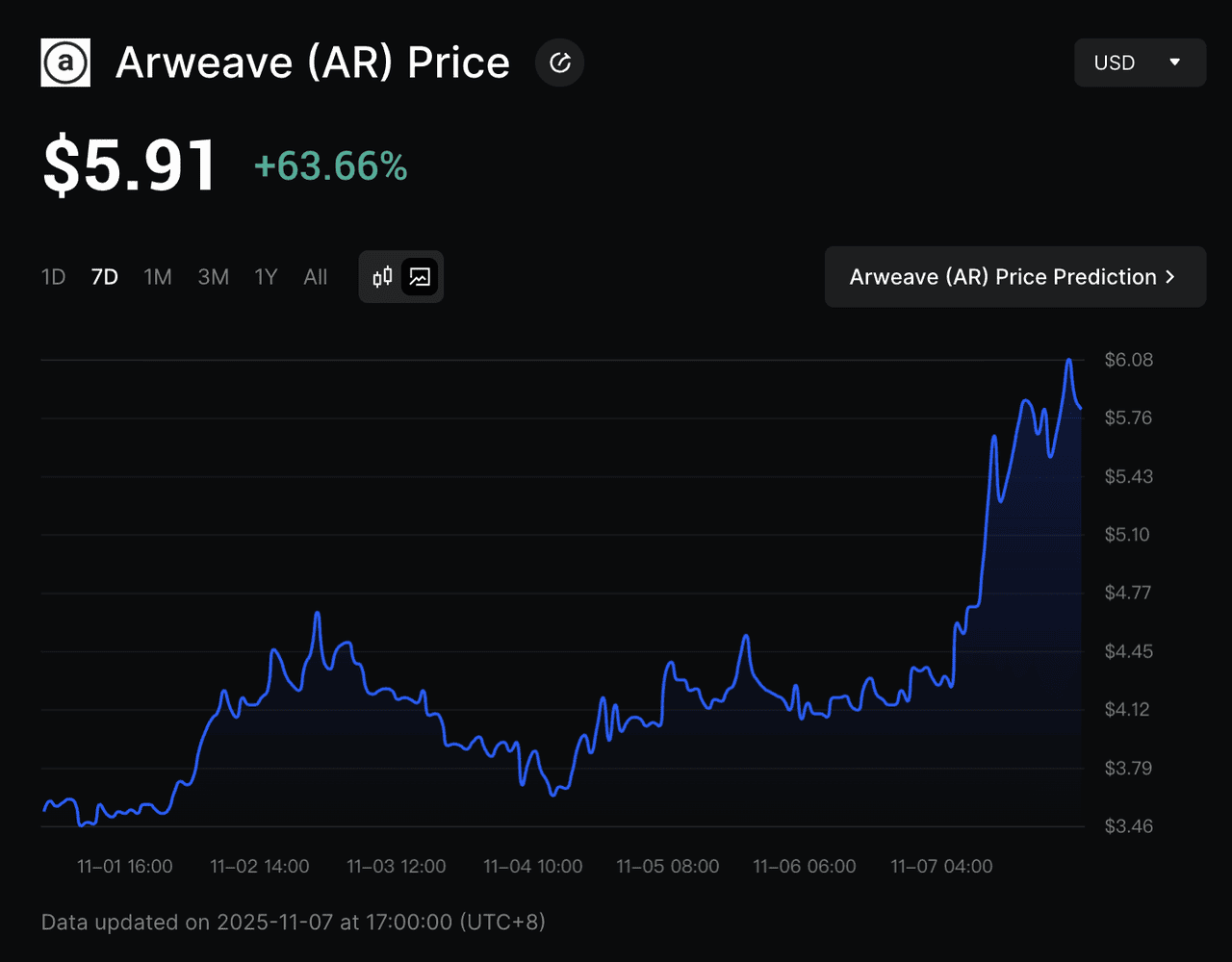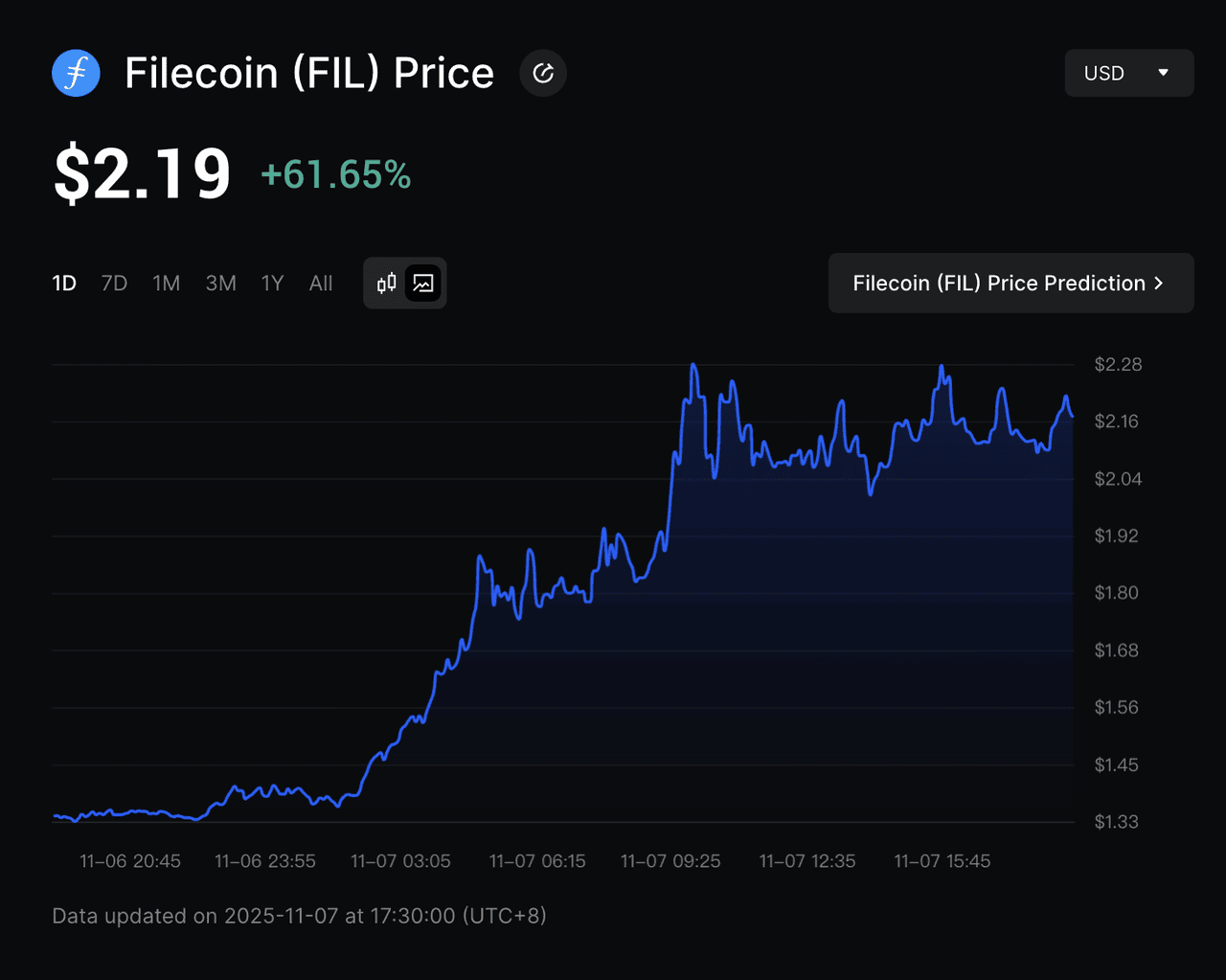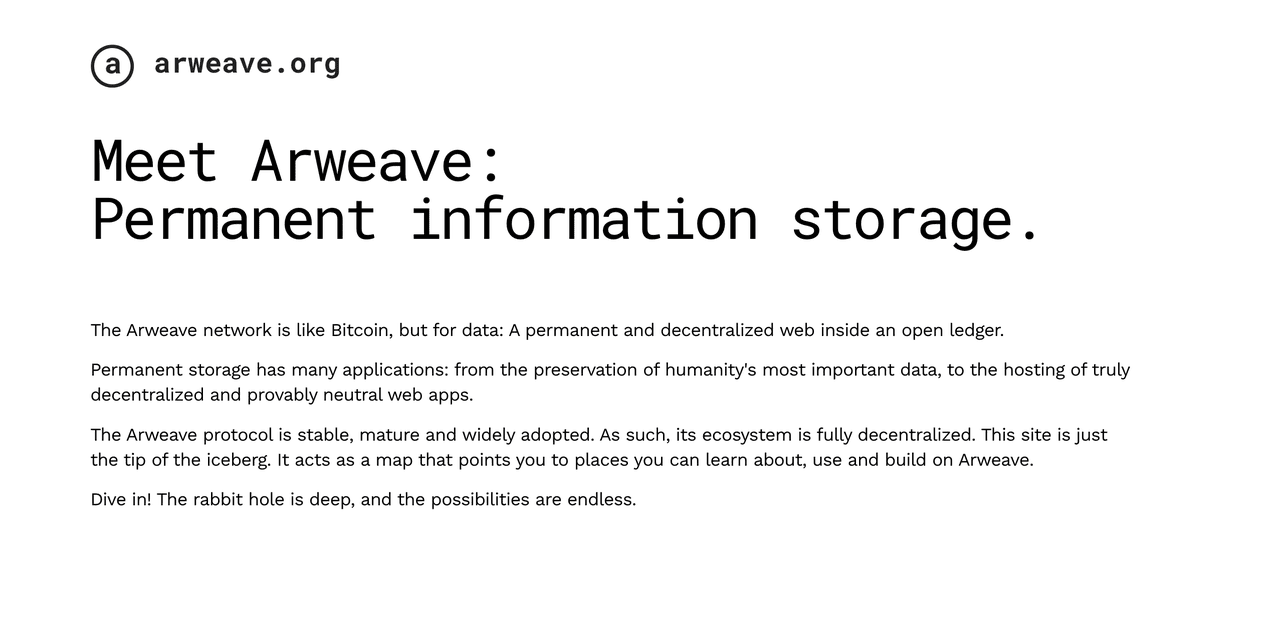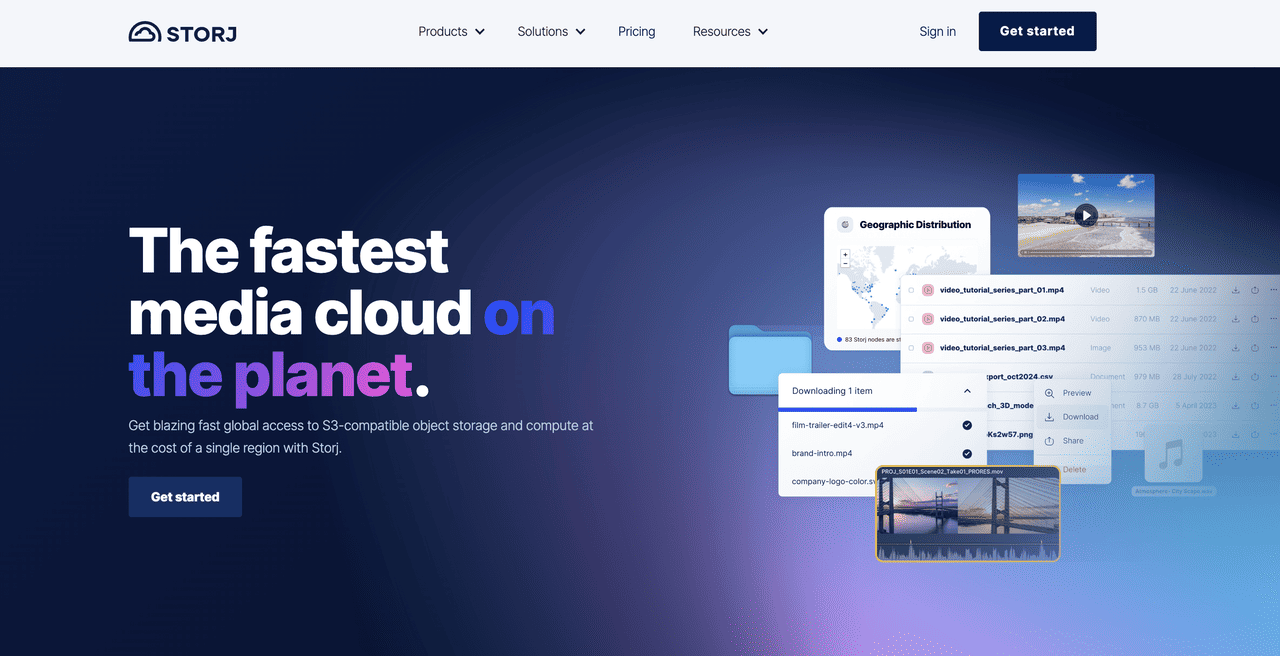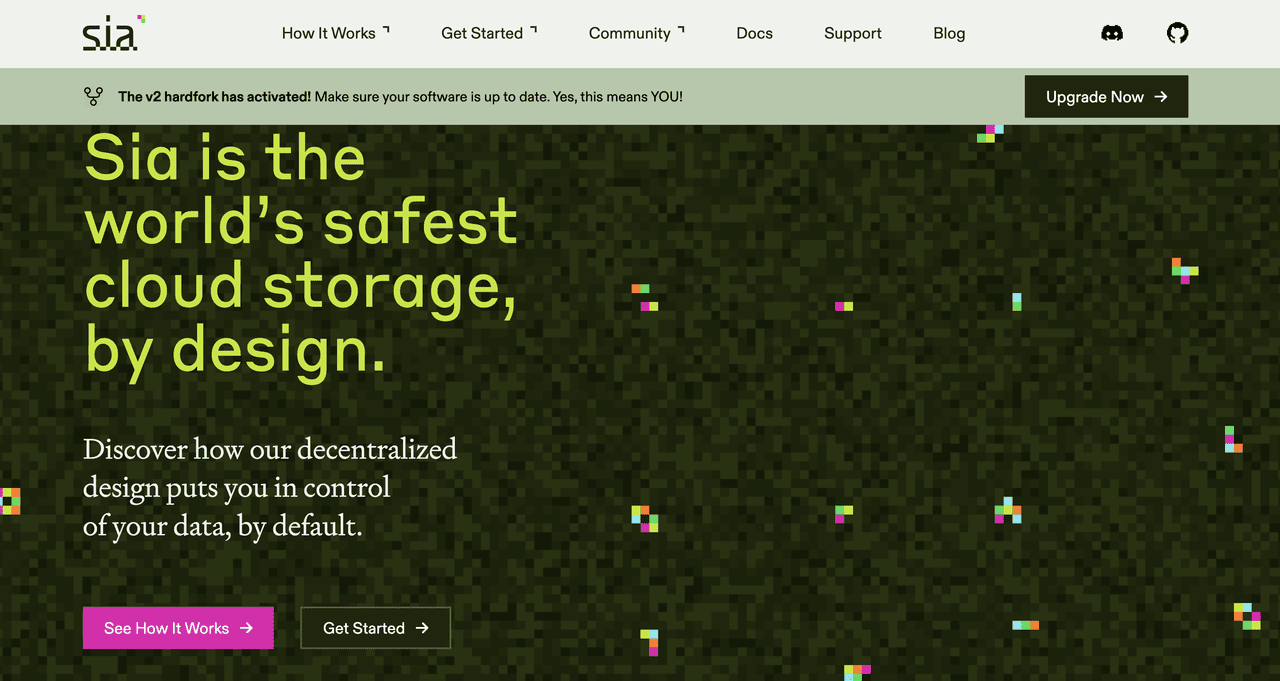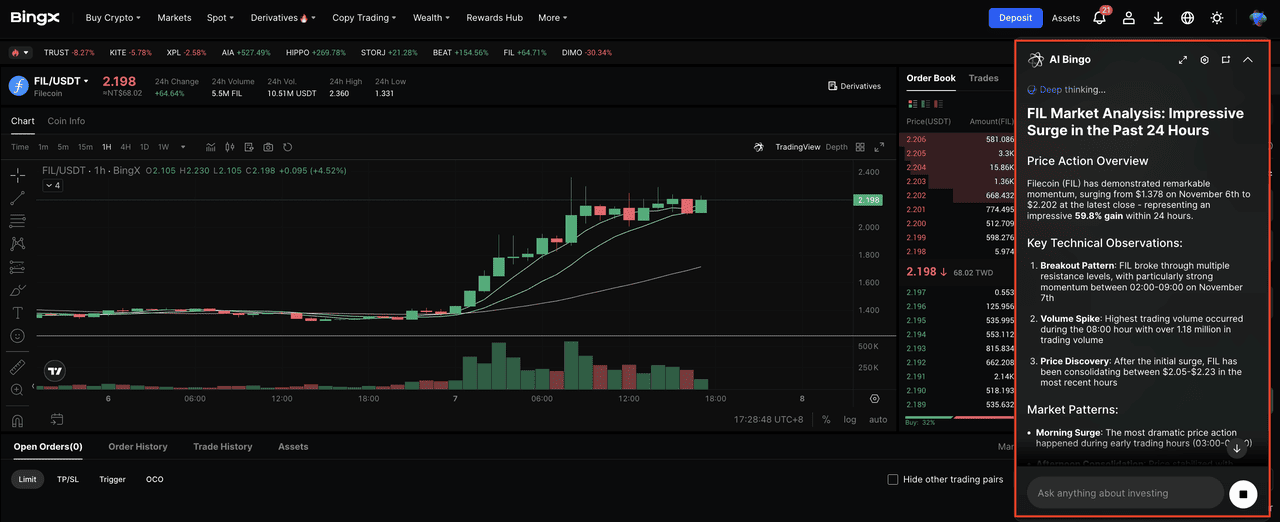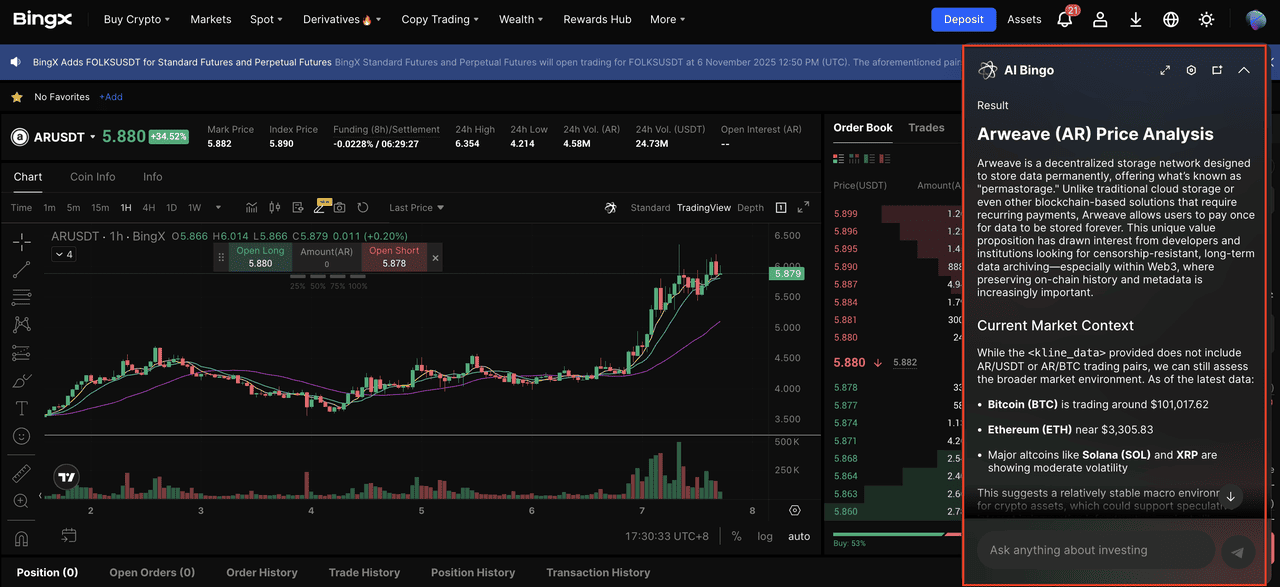As the world generates more data through
AI applications and digital expansion, the demand for data storage is reaching new highs. According to Business Insider, traditional cloud providers like Amazon Web Services (AWS) and Dell Technologies are reporting double-digit growth as AI workloads, big data analytics, and enterprise infrastructure drive record storage demand.
This wave of investment and market optimism is spilling over into the decentralized storage sector, a core pillar of the growing
DePIN (Decentralized Physical Infrastructure Network) narrative. Tokens such as
Filecoin (FIL),
Arweave (AR), and
Storj (STORJ) have each surged in the first week of November 2025, with FIL up more than 50%, AR climbing 60%, and STORJ gaining 20%, as investors look toward blockchain-based infrastructure that mirrors the traditional cloud boom.
In this article, we will explore what decentralized storage is, how it works, why it is gaining traction in 2025, and take a closer look at the top five blockchain projects shaping the decentralized data infrastructure sector.
AI Infrastructure Spending Surges Over 20% in 2025, Boosting Demand for Decentralized Storage
The decentralized storage market is gaining new momentum in 2025 as global data creation, AI infrastructure spending, and cloud expansion reach record highs. With both traditional and blockchain-based networks scaling to meet surging demand, storage has become one of the most critical components of the digital economy.
1. Global Cloud Storage Market Hits $161 Billion in 2025
According to Fortune Business Insights (2025), the global cloud storage market was valued at $132.03 billion in 2024 and is projected to reach $161.28 billion in 2025, growing at a CAGR of 21.7% from 2025 to 2032. Another forecast by IMARC Group estimates the market will expand to $490.56 billion by 2033 with a CAGR of 16.34%.
Meanwhile, the broader data-storage industry is expected to grow from $255 billion in 2025 to $774 billion by 2032, and the data-center market could exceed $1 trillion by 2034. Together, these figures highlight how rapidly global demand for scalable storage infrastructure is accelerating.
2. AI Infrastructure Growth of 20%+ Drives Enterprise Storage Demand
AI compute is fueling exponential data creation.
Amazon’s Q3 2025 earnings report showed 20.2% year-over-year growth in AWS, its fastest since 2022, with CEO Andy Jassy citing “strong demand in AI and core infrastructure”.
Dell Technologies also announced in October 2025 that it will raise its long-term forecast, projecting 11–14% annual growth in servers, storage, and networking within its Infrastructure Solutions Group.
These results confirm that storage is the backbone of AI infrastructure. Every model requires massive datasets, checkpoints, and backups, while decentralized networks such as Filecoin and Arweave offer verifiable, distributed capacity for open data and AI training archives. Growing data-sovereignty and compliance concerns further strengthen the case for decentralized systems that reduce vendor dependence and regional risk.
3. Decentralized Storage Tokens Surge 20–60%, Mirroring Global Infrastructure Growth
Investor confidence in storage infrastructure is visible across both traditional and crypto markets. Amazon’s stock surged 13% after hours following its cloud earnings beat, while Dell shares hit multi-year highs after raising its infrastructure outlook.
In crypto, decentralized storage tokens have followed the same pattern. Filecoin (FIL), Arweave (AR), and Storj (STORJ) gained 20% to 60% in early November 2025, reflecting growing investor rotation into blockchain projects tied to real-world infrastructure and data utility.
Data growth, AI workloads, and infrastructure investment are converging. As centralized storage giants expand capacity, decentralized storage networks are emerging as open, complementary alternatives poised to ride the same global demand wave.
What Is a Decentralized Storage Network and How Does It Work?
A decentralized storage network is a blockchain-based alternative to traditional cloud storage and a key component of
DePIN (decentralized physical infrastructure network), the emerging movement to build open, user-owned physical infrastructure. Instead of relying on centralized data centers owned by companies like Amazon or Google, decentralized storage distributes and encrypts files across a global network of independent nodes. Each node contributes unused storage space and earns rewards for maintaining data availability and security.
When a user uploads a file, it is:
1. Encrypted for privacy and security.
2. Split into smaller fragments that are distributed across multiple nodes.
3. Tracked and verified through cryptographic proofs such as Proof of Storage or Proof of Replication.
4. Retrieved and reassembled only when requested by the data owner.
This structure removes single points of failure, reduces the risk of data loss, and enhances censorship resistance. Because no single entity controls the network, users retain ownership of their data while still benefiting from scalable, cloud-like performance.
In essence, decentralized storage combines the reliability of cloud computing with the transparency and resilience of blockchain. As part of the broader DePIN ecosystem, it represents the foundation of a new internet infrastructure layer that is open, verifiable, and collectively owned.
Centralized Cloud Storage vs. Decentralized Storage: What's the Difference?
Both models store and deliver data, but they differ in structure, control, and transparency. Understanding these differences explains why decentralized storage is gaining attention as data demand grows.
| Category |
Centralized Cloud Storage |
Decentralized Storage |
| Architecture |
Data stored in servers owned by one provider (e.g., AWS, Google Cloud). |
Data encrypted, split, and distributed across many independent nodes. |
| Control |
Managed by the provider. |
Managed collectively by users and node operators. |
| Data Ownership |
Users rent space; provider holds control. |
Users own and verify their data on the network. |
| Security |
Protected by provider security systems. |
Secured with encryption and network redundancy. |
| Censorship & Availability |
Risk of downtime or data removal. |
Data remains accessible as long as nodes stay active. |
| Cost |
Pricing set by the provider. |
Pricing determined by network supply and demand. |
| Transparency |
Limited visibility into data storage. |
On-chain verification provides full transparency. |
In short, centralized storage offers performance and convenience, while decentralized storage emphasizes ownership, resilience, and transparency. As global AI and data infrastructure expand, both models are becoming complementary, serving different layers of the storage ecosystem.
Top 5 Decentralized Storage Projects to Watch in 2025
The decentralized storage sector is evolving quickly, supported by rising infrastructure demand and investor confidence. These five projects represent the most active and technically mature players shaping the next phase of decentralized data storage in 2025.
1. Filecoin (FIL) - The Backbone of Decentralized Data Infrastructure
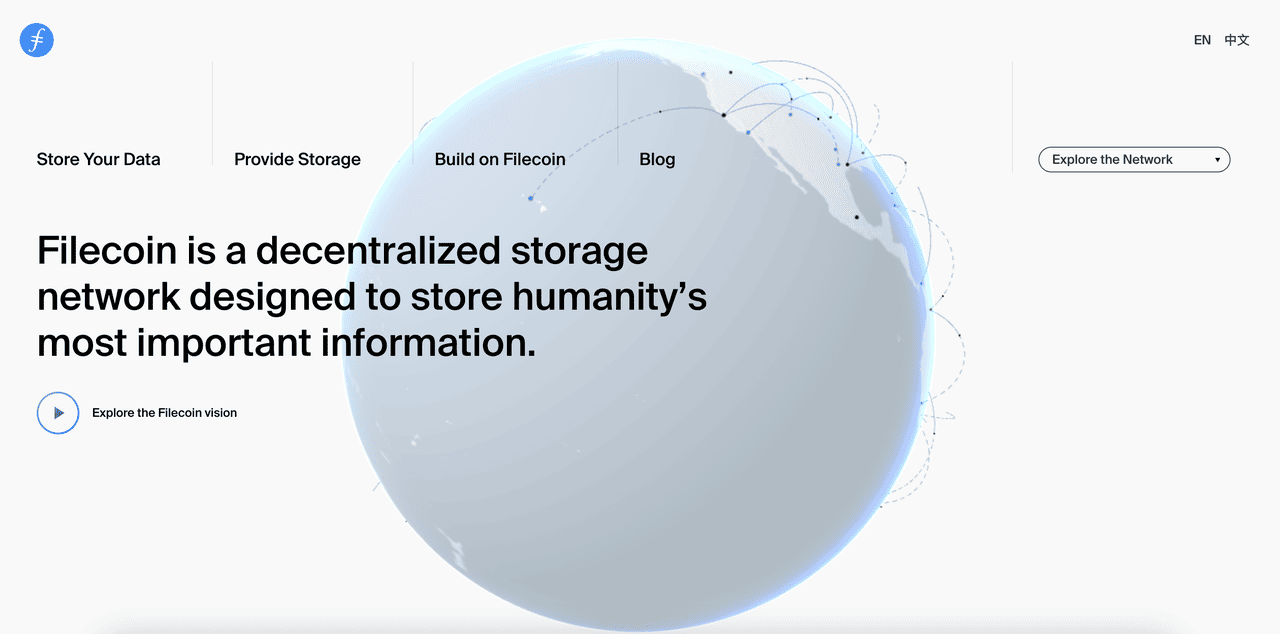
Source: filecoin.io
Founded: 2014
Network Type: Proof of Replication / Proof of Spacetime
Built on: IPFS
Filecoin is the backbone of decentralized data infrastructure and remains the largest project in the sector. Developed by Protocol Labs, it extends the InterPlanetary File System (IPFS) by adding tokenized incentives and cryptographic proofs that verify long-term data integrity.
In 2025, Filecoin’s utilization rate reached around 31%, showing strong real-world use beyond speculative capacity. Paid storage deals are expected to exceed 1 exbibyte (EiB) this year, driven by enterprise clients, open data repositories, and AI dataset archiving. Filecoin is leading the shift toward scalable, verifiable, and enterprise-ready decentralized storage.
2. Arweave (AR) - The Permanent Data Layer for the Web
Founded: 2017
Network Type: Blockweave
Core Use Case: Permanent data storage
Arweave is the permanent data layer of the decentralized web. It enables users to store information permanently through its blockweave architecture, ensuring that files, applications, and digital records remain accessible forever.
In 2025, Arweave gained momentum with its AO compute layer, which introduced on-chain processing alongside permanent storage. This update supports data-heavy use cases such as AI provenance tracking, research archives, and decentralized publishing. Arweave is building the long-term memory system that underpins Web3’s commitment to data permanence and transparency.
3. Storj (STORJ) - Enterprise-Grade Decentralized Cloud Storage
Source: Storj.io
Founded: 2014
Network Type: Distributed Object Storage
Focus: S3-compatible enterprise storage
Storj is an enterprise-grade decentralized storage platform designed for businesses seeking a secure and scalable cloud alternative. It offers S3-compatible object storage, meaning it uses the same interface as Amazon’s Simple Storage Service (S3), allowing organizations to migrate workloads without changing existing systems.
In early 2025, Storj reported a sevenfold increase in annual recurring revenue (ARR) and a 25% rise in paid data stored between January and April. Storj is becoming a trusted bridge between traditional cloud infrastructure and decentralized data solutions, appealing to enterprises that value both performance and privacy.
4. Siacoin (SC) - Affordable Peer-to-Peer Cloud Storage
Founded: 2015
Network Type: Proof of Work blockchain with smart contracts
Focus: Peer-to-peer storage rental
Siacoin is one of the most affordable and accessible decentralized storage platforms available today. It introduced a peer-to-peer marketplace where users rent unused disk space directly from one another, ensuring redundancy and privacy through encryption and distributed replication.
Siacoin’s network remains one of the most cost-effective solutions for decentralized file hosting and data backup. By offering low-cost storage secured by blockchain technology, Siacoin continues to serve as an essential option for individuals and developers seeking decentralized, budget-friendly cloud alternatives.
5. CESS Network (CESS) - AI-Focused Layer 1 for Data Availability and Edge Storage
Founded: 2021
Network Type: Layer 1 blockchain for decentralized data infrastructure
Focus: Data availability and edge storage for Web3 and AI
CESS Network is an AI-focused Layer 1 network designed to handle data availability and edge storage at scale. It features a multi-tiered architecture that combines data availability, decentralized CDN, and verifiable computing, enabling faster access and flexible data management for high-performance workloads.
In 2025, CESS aligned itself with the DePIN (Decentralized Physical Infrastructure Network) narrative, connecting on-chain storage with real-world compute environments. CESS is emerging as a next-generation data layer for Web3 and AI applications, built to meet the demands of an increasingly data-driven world.
How to Buy and Trade Decentralized Storage Tokens on BingX
Whether you are investing for the long term, trading short-term price moves, or exploring new opportunities in the decentralized storage sector, BingX offers both Spot and Futures Markets to help you take action. With
BingX AI integrated directly into the interface, you can access real-time insights, on-chain analytics, and market forecasts for tokens like Filecoin (FIL), Arweave (AR), Storj (STORJ), and Siacoin (SC) to make faster and smarter trading decisions.
1. Buy or Sell Decentralized Storage Tokens on the Spot Market
If your goal is to accumulate decentralized storage tokens such as Filecoin (FIL), Arweave (AR), or Storj (STORJ), or to buy during market pullbacks, the Spot Market is the best place to start.
Step 2: Click the AI icon on the chart to activate BingX AI. The system analyzes price patterns, identifies support and resistance levels, and highlights breakout signals in real time.
Step 3: Choose between a Market Order for instant execution or a Limit Order at your preferred price. Once filled, your tokens will appear in your BingX wallet balance, ready to hold or withdraw to an external wallet.
2. Trade Decentralized Storage Tokens with Leverage on Futures
For active traders, the BingX
Futures Market allows you to trade tokens like FIL and AR with leverage, enabling you to profit in both rising and falling markets.
Step 1: Search for the token’s USDT pair in BingX Futures, for example
FIL/USDT or
AR/USDT.
Step 2: Activate BingX AI to evaluate trend strength, volatility, and momentum indicators before entering a trade.
Step 3: Set your leverage level, select your entry price, and choose to go Long (Buy) or Short (Sell) depending on your market outlook. Manage your position with
Stop-Loss and Take-Profit levels to control risk effectively.
Final Thoughts
As AI infrastructure and data generation accelerate worldwide, storage is becoming one of the most essential layers of the digital economy. While centralized cloud providers continue to dominate enterprise workloads, decentralized networks are emerging as the open, verifiable counterpart — offering transparency, resilience, and user ownership.
Projects like Filecoin, Arweave, Storj, Siacoin, and CESS show that decentralized storage is no longer just a concept but a growing market segment backed by real use cases and measurable adoption. As storage demand mirrors the AI and cloud boom, decentralized systems are poised to play a critical role in powering a more distributed, data-driven future.
Related Reading

